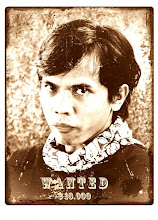Ancient Chinese travel chronicles refer to a place in the most southerly part of Sumatra called “Lampung” or “place of southerly winds”. The province is gene-rally flat with the highest mountains of Gunung Pesagi, Tanggamas, Seminiung, Sekincau and Raya all being dormant volcanoes. Bandar Lampung, the Provincial capital, was formerly two separate towns, Tanjungkarang and the port of Teluk Betung, which after the infamous eruption of Krakatau were both completely covered in volcanic ash. In the course of development, however this town have merged together to become one single city. 
Tourist Office:
Jl. Ahmad Dahlan No. 79, Gunung Mas,
Bandar Lampung 35211
Phone. (0721) 263401, 361430
Fax. (0721) 266184

Getting there:
Domestic airlines have daily flight from Jakarta. Rajabasa bus terminal is one of the busiest in Sumatra, with a constant flow of departures. The trip from Jakarta takes eight hours which include crossing Sunda strait between Merak in Java and Bakaheuni Lampung by ferry. Three trains a day run from Palembang.
Tourism Events
Krakatau Festival. This annual event is held at the end of August 25-30 2008 the festival commemorate Krakatau’s eruption in the late 19th century. The volcano is located in the Sunda Strait, South of Lampung, in the southern tip of Sumatra.
Places of Interest=]
Bandar Lampung has a Museum and a Monument of Krakatau Eruption.
Krakatau Island
Krakatau is an inhabited island and located on the southern part of the Bay of Lampung. Krakatau is reachable in three hours by boat from Canti, a fishing village near Kalianda, South Lampung. Anak Krakatau (Child of Krakatau) is still growing, first emerging from the sea in early 1928, 45 years after the legendary eruption in 1883.
my-indonesia.info/page


